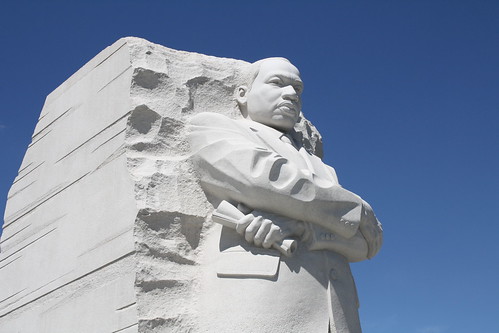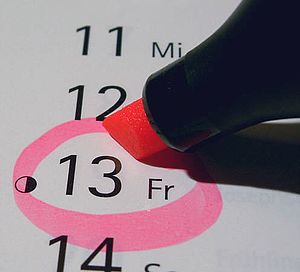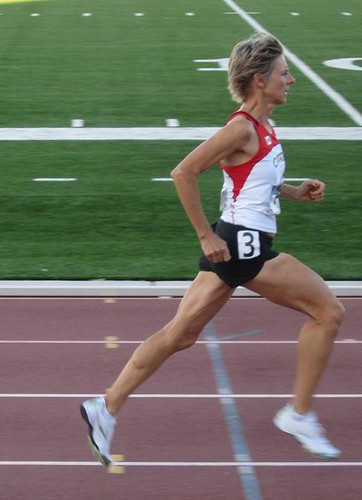 This past weekend, the Olympic Trials for the marathon were held in Houston. Congratulations go out to the three men and three women who qualified to represent the United States in London this summer. On the men’s side, the team will consist of Meb Keflezighi, Ryan Hall, and Abdi Abdirahman. On the women’s side, the team will consist of Shalane Flanagan, Desiree Davila, and Kara Goucher.
This past weekend, the Olympic Trials for the marathon were held in Houston. Congratulations go out to the three men and three women who qualified to represent the United States in London this summer. On the men’s side, the team will consist of Meb Keflezighi, Ryan Hall, and Abdi Abdirahman. On the women’s side, the team will consist of Shalane Flanagan, Desiree Davila, and Kara Goucher.
Representing your country at the Olympics is a tremendous honor. Frankly, being a part of the Olympic Games – on any level – is an incredible experience. But it isn’t just about representing your country. It is also about being competitive on the world stage.
There was a time when US marathoning had a high profile on the world stage. But the last time I looked, it has been quite a while since an Olympic gold medal went to an American marathoner. With that said, and the 2012 Olympic Trials now a memory, my question is this: is the United States making any progress towards truly being an international power in the marathon once again?
 As a clinician working with a sports population, I have seen my fair share of what I would call traditional hamstring strains. They are common in sports that involve sudden acceleration and/or deceleration.
As a clinician working with a sports population, I have seen my fair share of what I would call traditional hamstring strains. They are common in sports that involve sudden acceleration and/or deceleration.
These types of problems may appear to be simple to sort out as you listen to the patient history. Pattern recognition is important in the clinical reasoning process – but with that said, attention must be paid to those aspects of the clinical picture that don’t fit the pattern.
It is easy for clinicians to lose sight of one simple fact: the lumbar spine can refer pain throughout the lower extremity and can produce signs and symptoms that can mimic virtually any lower extremity disorder. We can thank our neurological “wiring” for this phenomenon. Understanding the behavior of the system under mechanical loading becomes critical for an accurate mechanical diagnosis, and subsequently an appropriate treatment intervention.
Over the past few months, I have seen quite a number of “hamstring strains” that were really a wolf in sheep’s clothing. They were lumbar spine issues that were mimicking hamstring signs and symptoms.
 Today is Martin Luther King, Jr. Day. This day recognizes the late civil rights leader, and has done so since it was first observed on January 20, 1986.
Today is Martin Luther King, Jr. Day. This day recognizes the late civil rights leader, and has done so since it was first observed on January 20, 1986.
This day should remind us, time and time again, that equality and civil rights are not just things that we should take for granted, nor should they be things that are noteworthy only when it is convenient to do so.
King was a man of brilliant words and oratory, of lessons learned and life lived as an African-American in the south. But those words of brilliance are applicable to all of us seeking to live the American Dream – regardless of race or gender. In 1963, he noted that “even though we face the difficulties of today and tomorrow, I still have a dream. It is a dream deeply rooted in the American dream.” King harkened back to the words of the US Constitution – those unalienable rights of life, liberty, and the pursuit of happiness.
You see, King’s Dream was (and is) the American Dream – or vice versa. But does King’s Dream remain unfulfilled – even in 2012?
 Today was a beautiful sunny day in Austin. It was crisp and cool in the morning, with some wonderful sunshine during the day. It was just like many other winter days in central Texas.
Today was a beautiful sunny day in Austin. It was crisp and cool in the morning, with some wonderful sunshine during the day. It was just like many other winter days in central Texas.
But wait – oh my, it is Friday the 13th! [insert ominous background music here]. Run, run, run for your life!
There are an estimated 17 to 21 million people in the United States that are affected by a fear of Friday the 13th. That amounts to about 5% of the U.S. population.
Holy friggatriskaidekaphobia, Batman!
With numbers like that, I feel fortunate to have survived a day like today. Apparently, it is a daunting task for many. How did I ever manage to make it through the most feared day and date in history?
 This is the seventh in a series of RunSmart videos. The series is on-going, with a new video released on a biweekly basis. These videos complement the material presented in the book “RunSmart: A Comprehensive Approach To Injury-Free Running”. The full series of videos can be found here. A transcription of the video will also be available with each post.
This is the seventh in a series of RunSmart videos. The series is on-going, with a new video released on a biweekly basis. These videos complement the material presented in the book “RunSmart: A Comprehensive Approach To Injury-Free Running”. The full series of videos can be found here. A transcription of the video will also be available with each post.
For those of you that are interested in a more interactive learning environment, consider attending a RunSmart Level One, Level Two, or Level Three program. Level One focuses on Principles, Level Two on Performance and Training Program Development, and Level Three on Physiotherapy and Running Injury Recovery. CCU credit for physical therapists is available for Level One (3.5 CCU), and is pending for the complete program (13.1 CCU). Further CCU details will follow as they are available. The next Level One program will be offered in Austin on February 25, 2012.
In this video, I will discuss the relationship between the motion of the arms, legs, and how they interact to increase stride frequency. Although most runners tend to attempt to change their stride frequency via thinking about their leg motions, it is far easier to affect stride frequency with the arms.
I hope you enjoy the video series. If you would like me to address any specific aspect of the RunSmart approach, drop me an email or add a comment to this article.
 Imagine this – a true national championship playoff, and four teams remaining: Oklahoma State versus Alabama, and LSU versus Kansas State. Such is life in the final two weeks of the 2011-2012 December Delirium.
Imagine this – a true national championship playoff, and four teams remaining: Oklahoma State versus Alabama, and LSU versus Kansas State. Such is life in the final two weeks of the 2011-2012 December Delirium.
Yes, it is all my imagination. I keep dreaming that maybe someday it will actually happen. The proposed “plus one” format for the BCS is a step in the right direction, but please, stop teasing us with a sorta-kinda National Championship and give it to us for real!
At this point, we’ve seen all of the key teams play in various bowl games. Most of these games have had little to no relevance to anyone other than, well, maybe an athletic director or school president or two. There have been plenty of intriguing match-ups, but that is about the only way to describe them: intriguing at best.
Onwards to the semifinals and finals of this year’s December Delirium!
 It has been just under 24 years since I graduated with my Bachelor’s Degree in Physical Therapy from Queen’s University in Kingston, Canada – otherwise known as the “Harvard of the North” (by everyone except McGill alumni, of course). Yes, that was back in the day when the entry level degree was a Bachelor’s Degree. Oh, those were the days. That is the topic of another upcoming post, but I digress.
It has been just under 24 years since I graduated with my Bachelor’s Degree in Physical Therapy from Queen’s University in Kingston, Canada – otherwise known as the “Harvard of the North” (by everyone except McGill alumni, of course). Yes, that was back in the day when the entry level degree was a Bachelor’s Degree. Oh, those were the days. That is the topic of another upcoming post, but I digress.
I have been fortunate to practice as a physical therapist in both Canada and the United States. Physical therapy, like many other topics of discussion, shares many similarities between Canada and the United States. But there are also a number of professional issues that are very different between the two countries. I will admit, there are times when it really confuses me – how some things can be so different just by simply crossing a geopolitical border.
Here is an international perspective on our profession, with special emphasis on self image and the perception of the profession from the outside looking in.
 "Running Injuries: Etiology And Recovery- Based Treatment" (co-author Bridget Clark, PT) appears in the third edition and fourth editions of "Clinical Orthopaedic Rehabilitation: A Team Approach" by Charles Giangarra, MD and Robert C. Manske, PT.
"Running Injuries: Etiology And Recovery- Based Treatment" (co-author Bridget Clark, PT) appears in the third edition and fourth editions of "Clinical Orthopaedic Rehabilitation: A Team Approach" by Charles Giangarra, MD and Robert C. Manske, PT.
 Allan Besselink, PT, DPT, Ph.D., Dip.MDT has a unique voice in the world of sports, education, and health care. Read more about Allan here.
Allan Besselink, PT, DPT, Ph.D., Dip.MDT has a unique voice in the world of sports, education, and health care. Read more about Allan here.
 Top 5 finalist in three categories: "Best Overall Blog", "Best PT Blog" and "Best Advocacy Blog".
Top 5 finalist in three categories: "Best Overall Blog", "Best PT Blog" and "Best Advocacy Blog".